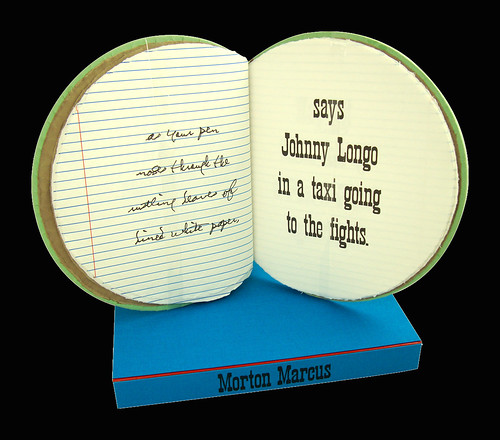 Michael Sharp’s Book of Leaves is a work firmly steeped in the past, exploring scientific, photographic, and ecological histories within its pages. Using cyanotype, an old photographic process that results in a rich dark blue, Sharp placed dried leaves collected around the Utah State Arboretum at the Red Butte Gardens and created photograms once the paper was exposed. Leaving behind a ghostly outline, each leaf from specific trees tells a different story and hints at a distinctive personality.
Michael Sharp’s Book of Leaves is a work firmly steeped in the past, exploring scientific, photographic, and ecological histories within its pages. Using cyanotype, an old photographic process that results in a rich dark blue, Sharp placed dried leaves collected around the Utah State Arboretum at the Red Butte Gardens and created photograms once the paper was exposed. Leaving behind a ghostly outline, each leaf from specific trees tells a different story and hints at a distinctive personality.
Upon opening the small, compact box, the viewer finds what initially appears to be a modest book entitled Utah Diversity, and above this is a symbol that appears to be a beehive or perhaps a pinecone. On the box itself in diminutive type, we learn about the history of cyanotype and its use in scientific documentation of natural objects and also in blueprints. The artist also mentions a critical feature the viewer encounters when unfolding the book: bits of the cyanotype peel or flake off. This crumbling deterioration is analogous to the subjects within the pages, the fragile dried leaves, reinforcing the relationship between the subject and the book itself.
Once opened, the viewer is informed that the images following are a “representation of the (tree) populations.” It is here that the charming piece shows its true intentions. Each leaf, as if it were a separate person, appears with its Latin name and common name. No two leave are alike, and they are paired together at times because of shared or discordant characteristics. For instance, the Cully Black Birch and the European White Birch look like siblings, with a similar shape and outline. In other cases, like the Yoshino Cherry and Blacklace Elderberry, we have a very oval leaf with tiny jagged edges (Cherry) opposite a thin-leafed, smooth-textured Elderberry, which is reminiscent of a small flower plant in shape. Some leaves, like the Fairmont Ginkgo, have an almost human-like quality. One can almost see a face in profile on either side of the leaf, or perhaps even a pair of lungs, coming from this particular outline. Much like Rorschach tests, it is hard not to try and see shapes, people, or other fanciful interpretations. The more the viewer pages through the book, the more the march of quirky personalities and mysterious histories play out before them.
Book of Leaves is foremost a book of memories. From the precise curation of the trees that Sharp selected to the drying and exposure of each brittle leaf, this documentation reminds the viewer of each step in the process before them. Remembering that even the paper is an artifact of a tree turned into pulp, this piece is haunted by all aspects of ghosts concerning the humble tree.
But perhaps the most delightful feature of this work is what it transforms into. Book of Leaves can be stood upright and unfolded like a star-shaped accordion. Suddenly, it has transformed and mimics one of the many leaves found within, creating an organic pattern based on how the audience choose to unfold the pages. Each iteration and choice creates a new work in a way, reinforcing the concept of this book being about memory and adding a unique performative element. As mentioned previously, some of the cyanotype falls away as well, slowly eroding the book as much as the process of decay in nature. Sharp’s work is meant to be gently playful yet a bit fragile, referencing the subjects and the fleeting history that lies within.




























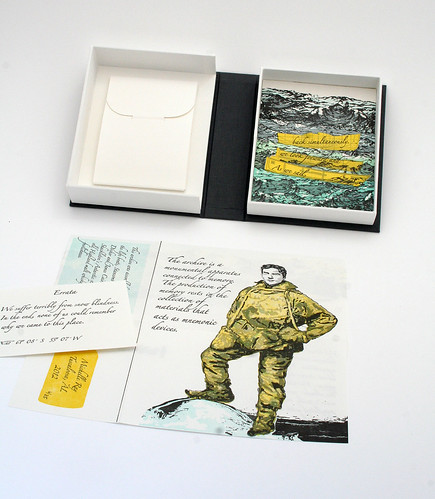
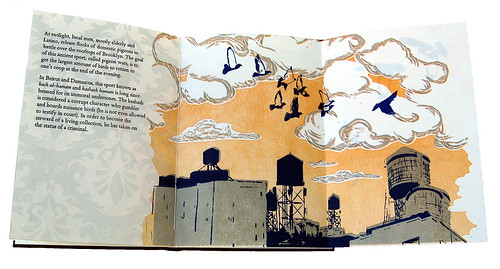

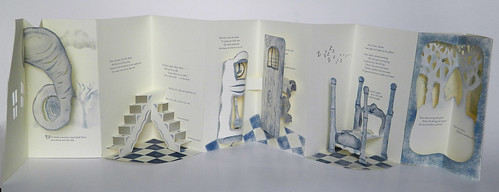
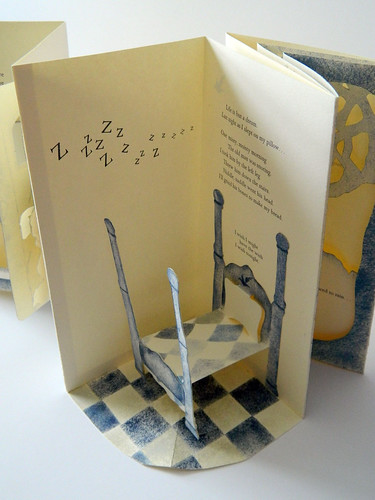

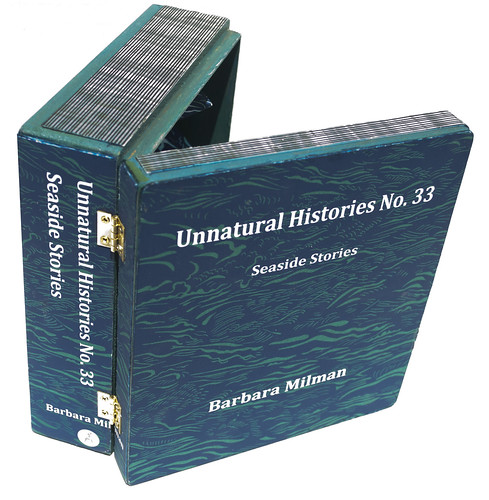
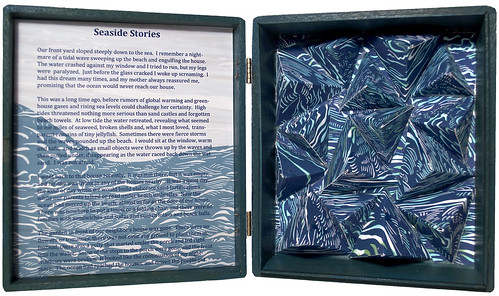
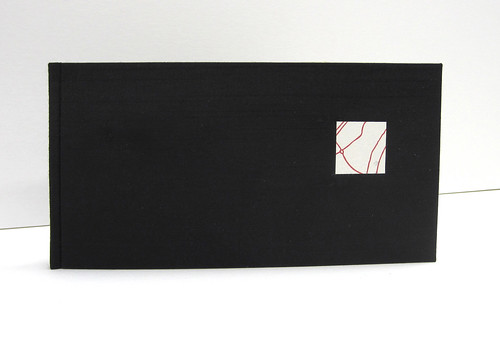
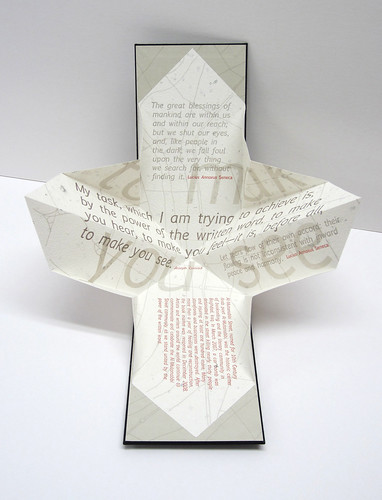




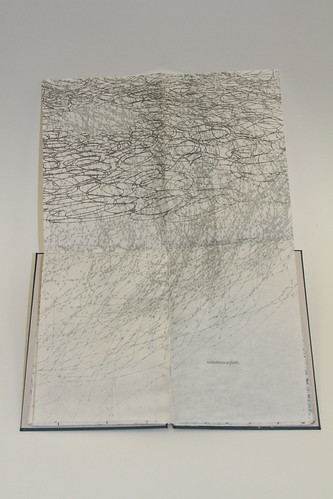

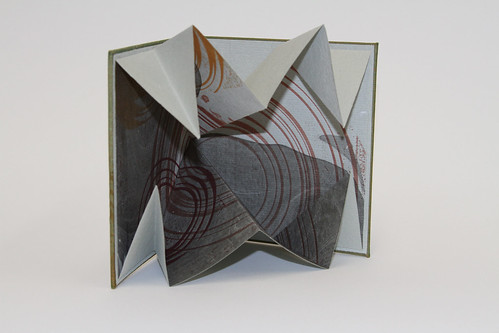
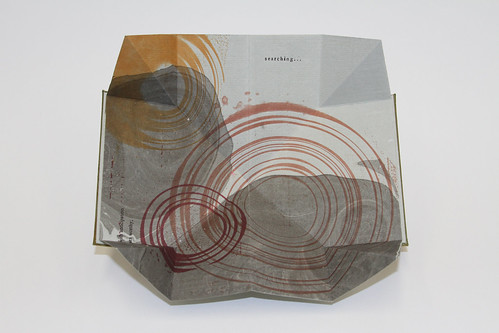

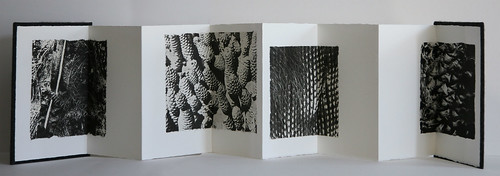



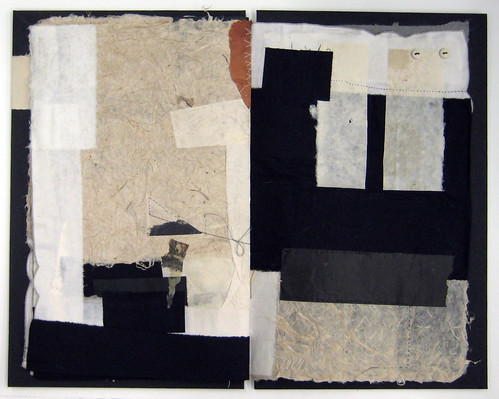

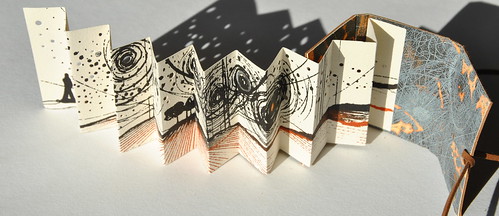
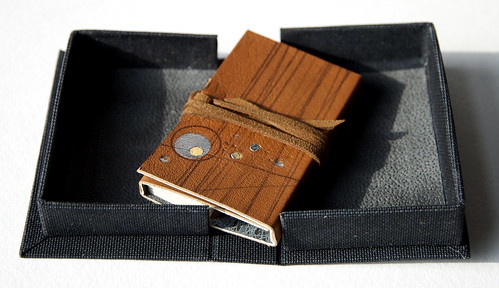


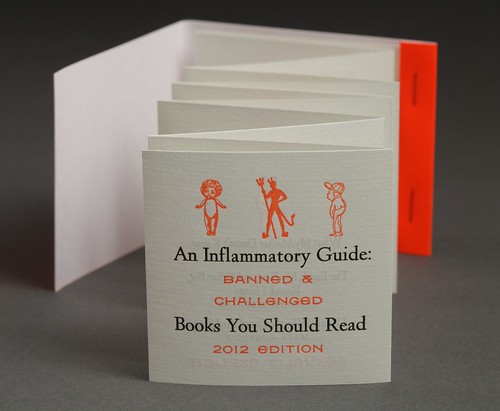
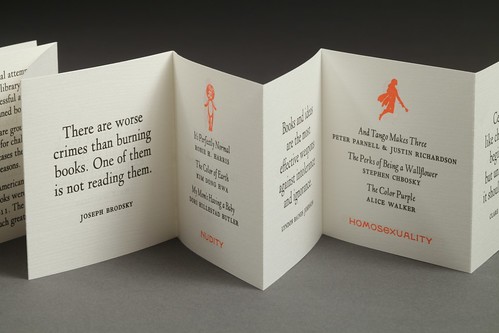

 This design allows the book to have the protection of a case binding at the spine, but still allows the spine to be exposed after opening. It also creates an opportunity for more than one loop closure at the front; one holds the front edge closed, the other holds the spine piece in place. The placement of the ‘button’ part of the closure, made of a spiral of dark brown linen cord, mimics the placement of a door handle. The front cover of the book along with the partial tab, has paper cutout images of traditional Korean doors.
This design allows the book to have the protection of a case binding at the spine, but still allows the spine to be exposed after opening. It also creates an opportunity for more than one loop closure at the front; one holds the front edge closed, the other holds the spine piece in place. The placement of the ‘button’ part of the closure, made of a spiral of dark brown linen cord, mimics the placement of a door handle. The front cover of the book along with the partial tab, has paper cutout images of traditional Korean doors.
